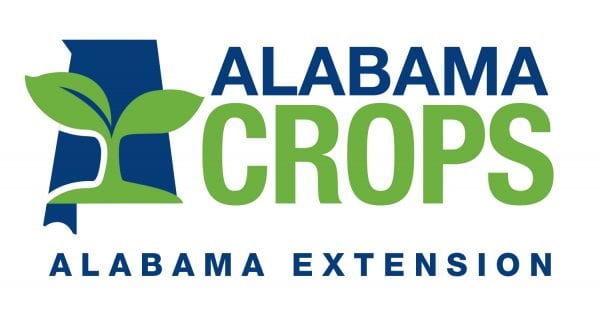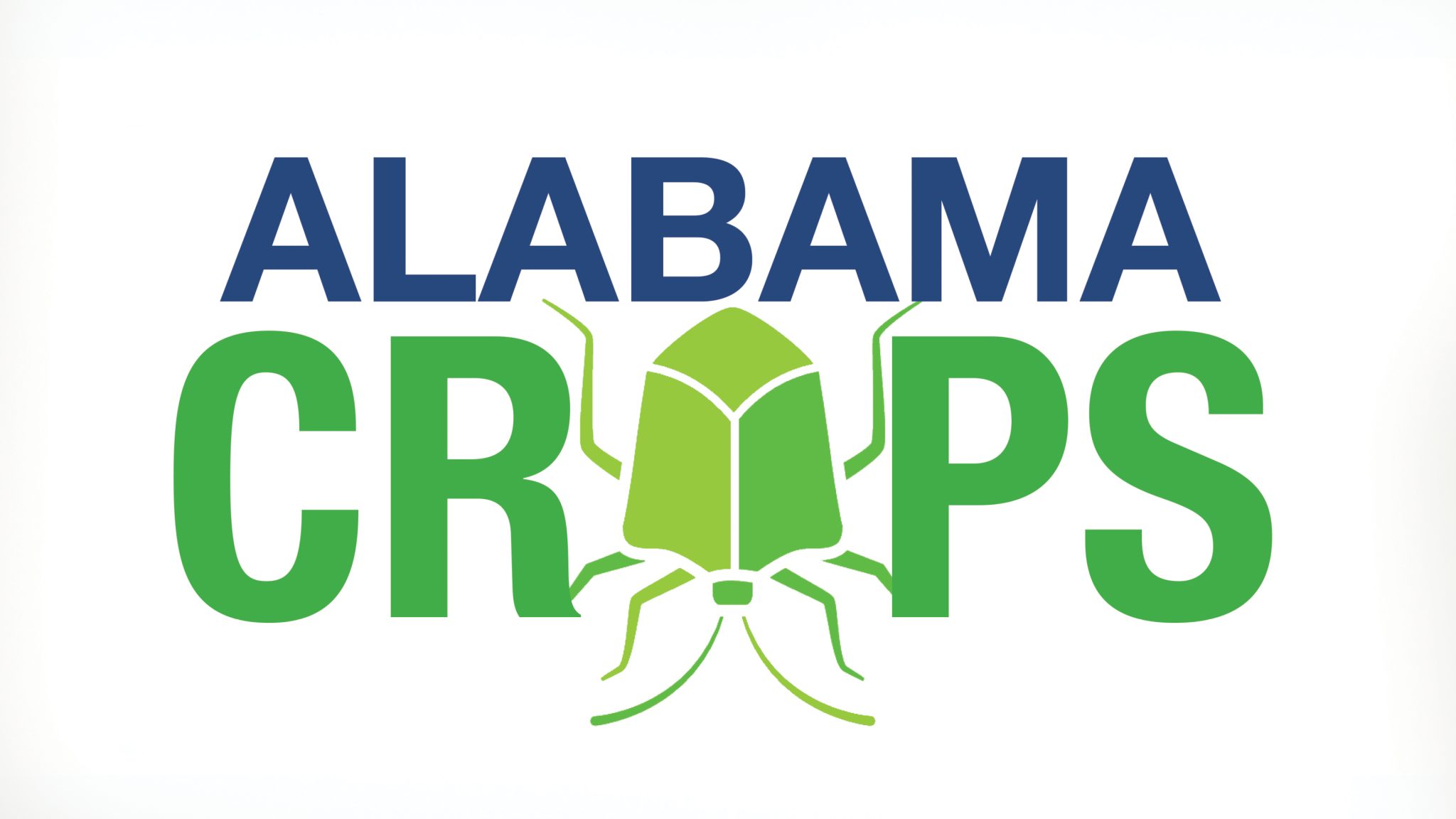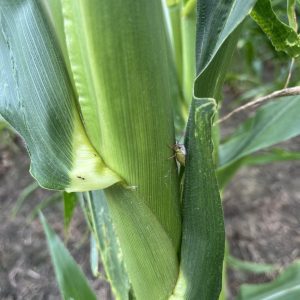Crop Production

The Alabama Crops Insect Report contains some the latest information on insect activity in the state’s major row crops. These updates come from members of the Alabama Cooperative Extension System agronomic crops team. For more information on row crops in Alabama, listen to the Alabama Crops Report Podcast and subscribe to the Alabama Crops Report Newsletter.
Soybeans
No update at this time.
Cotton
June 4, 2024 – Tales of Cotton Insects
by Ron Smith and Scott Graham
Tarnished Plant Bugs
Over the couple days, there were multiple reports of observed adult tarnished plant bugs in April or early May planted cotton across central and north Alabama. In most cases, populations were below threshold, and a few squares were missing. However, some fields are at threshold and treatments are going out. Thus far, reports from southwest and southeast Alabama are that few or no plant bugs are being observed.
As our earliest fields begin to square, monitor pinhead square retention on the upper two or three nodes of plants. Our goal is to maintain 80% of these first position squares (closest to the mainstem). The reason to monitor the upper two or three nodes each week is that these are the “new squares” that were put on in the current week (added since last week’s scouting trip). In addition to monitoring square retention, a sweep-net is a good monitoring tool to determine the level of adult plant bugs in the field (threshold is 2 adults per 25 sweeps). Even if square retention is above 80%, we recommend treating adults because they will start feeding on pinhead squares and depositing eggs that will hatch in the following 7 to 10 days.
Our general recommendation for adult plant bug control is the high rate of imidacloprid or 1.75-2oz of Centric. In some areas, bifenthrin is also an option. In cases of high pressure, acephate may also be considered or tank-mixed with imidacloprid. We generally try to stay away from acephate and bifenthrin to preserve better beneficial insects and for resistance management, however under heavy pressure we need to worry about plant bugs and deal with other issues if/when they arise.
Based on our observations in daisy fleabane this spring, we suspect this could be a multiple spray year for adults in June, particularly for early planted cotton. Remember that as long as square retention is at or above 80% a previous application “did its job” and more adults have moved into the field. Also keep in mind that June applications for adult plant bugs can set the tone for the rest of the season. By knocking back adults, we are reducing egg lay and nymphs that hatch out later as blooms begin to appear.
Upcoming Meetings
The 65th Alabama Cotton Scout Schools kicked off this week in Headland. We have a few more opportunities to attend.
June 11: Associated Growers Gin (15031 Brownsferry Road, Athens, Alabama 35611)
June 25: E.V. Smith Research Center (4725 County Road 40, Shorter, Alabama 36075)
June 26: McCord’s Fire Station #1 (1150 County Road 157, Centre, Alabama 35960)
If we can be of any help, please don’t hesitate to reach out and let us know (Scott Graham: 662-809-3368 or Ron Smith: 334-332-9501). To stay up-to-date on the Alabama insect situation, subscribe to the Alabama Cotton Shorts Newsletter, Alabama Crops Report Newsletter, and the Syngenta Pest Patrol Hotline.
Peanuts
No update at this time.
Corn
June 5, 2024 – Corn Insect Update
by Caitlyn Lawton
Corn is continuing to progress across the state. According to the most recent USDA Crop Progress Report on June 3, only 13% of corn in Alabama is silking.
Producers and Extension personnel have seen and heard about Japanese Beetles moving into corn fields and feeding on the leaves. These beetles are green/brown metallic in color. They feed between the leaf veins, giving it a lace-like appearance (see below). However, this feeding is not enough to cause any economic damage.
Other insects that can feed on silks and tassels include corn earworms (CEW), adult corn rootworms, and grasshoppers. When these insects feed on silks, they clip them off, resulting in incomplete pollination. Treatment for any of these insects to protect silks should only occur if
- less than 75% of ears have silks
- there are 5+ rootworm beetles or 2+ Japanese beetles on each ear
- silks are being clipped to within 0.5 inch of the ear tip.
The combination of these three factors happening at once are rare, thus insecticides targeting silk feeders are rarely justified. Corn leaf aphids can become an issue if there are high populations on tassels and silks. Treatment may occur if there are more than 50 aphids on 50% or more of the plants that are tasseling. So far, Extension personnel have not seen or heard of any of these pests being an issue.
There are also quite a few brown stink bugs in the field. Stink bugs like to feed on the high protein content in developing grain. Below shows a brown stink bug piercing through an ear, and symptoms of where feeding has previously occurred on an ear. Expect to see a shift to more southern green stink bugs in July when the eggs start to hatch out. Extension professionals recommend using a full rate of a pyrethroid, such as bifenthrin, to adequately control stink bugs. At this point in the growing season, thresholds are shown in the table below.
Stink Bug Thresholds
| Growth Stage | Resulting Damage | Threshold |
|---|---|---|
| V14-VT | Crooked ears or missing kernels | 1 stink bug / 8 plants |
| R1-R4 | Decreased kernel size and weight | 1 stink bug / 4 plants |
Trade and brand names used in this publication are given for information purposes only. No guarantee, endorsement, or discrimination among comparable products is intended or implied by the Alabama Cooperative Extension System.






